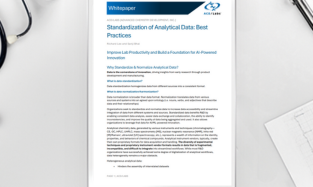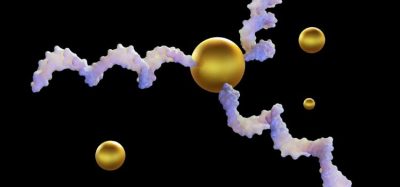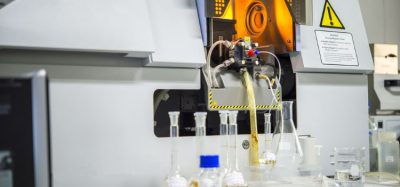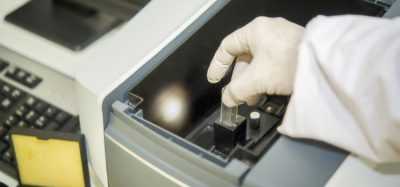Fast quantitative 2D NMR for quantifying analytes in complex mixtures
Posted: 3 July 2015 |
Nuclear magnetic resonance (NMR) spectrometry is a major quantitative tool in pharmaceutical analysis, owing to its extremely high accuracy. However, absolute quantification in complex mixtures is often hampered by spectral overlap which considerably reduces the quantitative performance of NMR.
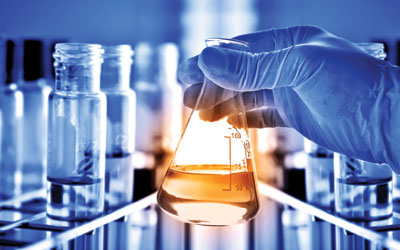

Fortunately, new quantitative approaches based on two-dimensional (2D) spectroscopy have recently been proposed, and they are capable of determining simultaneously the concentration of multiple analytes in mixtures with an excellent trueness and precision. The development of fast acquisition strategies has considerably improved the applicability of these methods, which are particularly appealing for the study of biological mixtures, with promising applications in metabolomics and pharmaceutical studies.
As a widely-used analytical technique, NMR can be employed in a variety of experiments (liquid and solid state spectroscopy, relaxometry, imaging etc.) with applications in a large range of domains, from physics and chemistry to biology and medicine. While NMR is widely known for its potential to provide structural information on complex molecular structures, it is also widely recognised for its quantitative capabilities, thanks to its nondestructive and nonspecific character. The quantitative potential of NMR is particularly recognised in pharmaceutical analysis, where it is increasingly used at early drug development stages as a universal detector to determine the concentration of analytes in a variety of samples1. Quantitative NMR is also widely used in the growing field of metabolomics, which aligns very closely with the aims and interests of many researchers in the pharmaceutical industry, with more and more applications in drug discovery and development.
In quantitative NMR, the most widely used tool is 1H NMR spectroscopy, thanks to its high sensitivity. Unfortunately, the accuracy of quantitative 1H NMR is often strongly hampered by spectral overlap. In addition to the limited range of 1H chemical shifts, two main reasons can explain this overlap. Firstly, samples often contain closely related compounds, for which the 1H NMR spectra are very similar. The second reason explaining the complexity of 1H NMR spectra is the high number of compounds showing peaks in the same spectral region. This is particularly the case in biological samples such as mixtures of metabolites, where the determination of individual analyte concentrations by 1H NMR is extremely difficult.
Several approaches have been described recently to deal with this major issue. In particular, the last decade has witnessed the emergence of quantitative solutions relying on two-dimensional (2D) NMR2. Proposed by Jeener in 1971, 2D NMR has been applied for decades as a routine tool for structure elucidation, but its use for quantitative purposes is much more recent. Still, the potential of quantitative 2D NMR is extremely promising, as the peaks are spread along two orthogonal dimensions, thus leading to a much better separation between the resonances of multiple analytes in mixtures. Moreover, 2D NMR offers a large variety of pulse sequences, providing adapted solutions to address various analytical situations.
There are two main reasons for the late development of quantitative 2D NMR. The first one is the complexity of the 2D NMR peak response which is highly site-specific. The second reason is that 2D NMR suffers from long acquisition times because of the need to repeat numerous 1D experiments with incremented delays in order to obtain a well-resolved 2D matrix. This article describes novel and efficient strategies which have been described recently to circumvent these two issues, leading to accurate and robust quantitative methods and paving the way to high-throughput applications.
Absolute concentrations from 2D NMR spectra
The first apparent limitation of 2D NMR for quantitative analysis is its site-specific character. In 2D NMR, the peak volume depends on a number of factors (pulse sequence delays and angles, coupling constants, relaxation times), and is given by:
V = k(T1, T2, JCH, JHH, delays…) ·p ·[c] ·VS
p is the number of equivalent spins and is a priori known. VS is the sensitive coil volume, which is the same for all samples analysed with a given hardware configuration. [c] is the analyte concentration to be determined, and k is a proportionality constant depending on J-couplings, relaxation times, pulse sequence delays, off-resonance effects, etc. Because k is not known and is site-specific, it is necessary to find a way to determine it for each peak to be used for quantification. Figure 1 summarises the different approaches that have been described towards this end2. The first one consists in modifying the NMR experiment itself to remove the dependence of k on the different factors mentioned previously so that the peak volume is not site-specific anymore. A second strategy consists in determining, for each peak, the exact value of k, based on theoretical considerations. A last family of approaches also determines the different k values, but relies on more classical analytical approaches such as calibration or standard additions. The two first strategies are specific to NMR, and while being very elegant, most of them have not yet reached the application stage. On the contrary, the third strategy (calibration or standard additions) has been proved very efficient, and it is actually not different from those used for decades in many other analytical techniques such as chromatography or optical spectroscopy. Moreover, it has the advantage of being a generic approach (i.e., it can be applied in conjunction with any 2D NMR pulse sequence).
In the external calibration approach, calibration curves are first obtained by plotting, for model samples in variable concentrations, the 2D peak volumes versus the corresponding concentration. Then, a 2D spectrum is recorded on the sample containing the targeted analyte in unknown concentration, and this concentration is determined through the equation of the regression curve. This approach offers an invaluable solution to the problem of accuracy in 2D NMR. Moreover, a single calibration procedure is sufficient to quantify multiple analytes simultaneously, if the calibration samples contain all the targeted molecules. This approach was already successfully applied to quantify the metabolites in a variety of samples, from extracts to biological fluids, or even in milk. An accuracy of a few percent was generally reported.
The calibration strategy described above is well adapted to the simultaneous quantification of multiple compounds, however it suffers from differences between the model samples and those where quantification is performed. In certain cases, the NMR response of the external standards may differ from the one of the sample of interest. Fortunately, this limitation can be circumvented by relying on an alternative standard addition procedure. Known amounts of the target analyte (or mixture of analytes) are gradually spiked to the analysed sample. For each analyte whose concentration needs to be determined, a standard addition curve is fitted by the linear regression equation: V = a•[c] + b, where V represents the 2D peak volume and [c] the concentration of the analyte in the sample. The initial concentration of the analyte in the sample is then calculated by the b/a ratio. We successfully applied this approach to the determination of major metabolite concentrations in breast cancer cell extracts (Figure 2)3. It is probably the most accurate of the different approaches described above, because the target analytes are acting as their own reference, and because the whole procedure is carried out within the same NMR tube, thus avoiding the inter-sample variation drawback of the external calibration approach. However, this procedure may become quite heavy for high-throughput studies involving a large number of samples. In this case, the external calibration approach should be preferred, even if there may be a price to pay in terms of precision. Another drawback of standard additions is that they rely on a linear response of the NMR signal versus concentration. While it is almost always the case for small molecules, we recently showed that non-linear effects could occur in bigger molecules of pharmaceutical interest such as polysaccharides4. In this case, the standard addition approach leads to large quantification errors, while the external calibration approach remains very accurate, as it accounts for non-linear effects.
The pulse sequences
Readers may wonder why no discussion on the choice of the pulse sequence has been mentioned so far. This is simply because the analytical strategies detailed above are applicable to any 2D pulse sequence, either homo- or hetero-nuclear. The choice of the pulse sequence only depends on sensitivity and resolution considerations, and should be adapted to each analytical situation. As shown in Table 1, there is a large variety of 2D NMR pulse sequences available, each of them offering its own advantages and drawbacks. The choice of the ideal 2D pulse sequence is often given by time versus resolution considerations. The acquisition of 2D NMR data requires the repetition of N 1D experiments with N = N1·NS –where NS is the number of transients and N1 the number of t1 increments– and two consecutive transients are spaced by a repetition time TR.
Homonuclear 1H experiments are more sensitive than heteronuclear ones and require smaller NS values, and among heteronuclear pulse sequences, those with inverse detection (such as HSQC) need less scans than those with direct detection (such as 2D INEPT). On the other hand, the indirect spectral dimension plays a key role in the experimental time, which depends on the parameter sampled along the indirect F1 dimension. Homonuclear J-couplings require a smaller number of points than 1H chemical shifts, which in its turn is more favourable than 13C chemical shifts. As a consequence, J-resolved 1H spectroscopy can be shorter than COSY, and COSY requires a shorter experimental time than HSQC due to the larger frequency range of heteronuclei. On the whole, the experiment time is governed by the sensitivity and by the parameter governing the acquisition of the indirect dimension. But another major aspect to be taken into account is the capacity of the experiment to separate overlapping resonances. This feature improves when the spectral range increases, and as a consequence it is inversely correlated with the experiment time aspects described above.
Therefore, given the multi-parametric aspects of 2D NMR experiments, there is no universal recipe to choose a 2D pulse sequence for quantitative analysis. The ideal choice depends on the samples to be analysed: while a fast 2D experiment (such as homonuclear J-resolved spectroscopy) will be sufficient to quantify mixtures with a limited number of compounds, the analysis of very complex mixtures will require the use of more discriminating pulse sequences such as 1H-13C HSQC, while having to pay a certain price in terms of sensitivity.
Finally, it should be highlighted that the accuracy of the results also depend on signal processing considerations, as well as on the method used to determine 2D peak volumes (integration or deconvolution). Readers are referred to recent literature on this subject2.
Fast acquisition strategies
The present section is devoted to the second drawback of 2D NMR mentioned at the beginning of this manuscript: the experiment time. From the strict point of view of quantitative analysis, the main drawback of the experiment duration is that long experiments are more likely to be affected by spectrometer instabilities over time. Even if the resulting ‘t1 noise’ is not visible, the signal-to-noise ratio (SNR) is always lower in the indirect F1 dimension, which affects the precision and accuracy of quantitative 2D experiments. This drawback highlights the need for alternative and faster 2D acquisition strategies.
The first approach to reduce the duration of quantitative 2D NMR experiments is to carefully optimise their acquisition parameters in order to reduce their duration while preserving, or even improving, their quantitative performance. Such an optimisation may seem trivial, but the routine parameters generally associated with conventional 2D NMR pulse sequences are generally not optimised for quantitative applications. Depending on the 2D experiment considered (see Table 1), the experiment time can be reduced by adjusting the number of t1 increments (N1) and/or the number of scans (NS). Careful optimisations of acquisition and processing parameters make it possible to reach a good degree of trueness and precision (generally below 10%) with a reasonable experiment time – typically a few tens of minutes5.
A second approach to reduce the experiment time in quantitative 2D NMR is to rely on alternative acquisition strategies capable of recording 2D spectra in a much shorter time than conventional 2D NMR. Among these strategies is ultrafast 2D NMR, an approach inspired from imaging and capable of recording any kind of 2D NMR correlation in a fraction of a second (Figure 3)6. At the heart of this methodology is a spatial-encoding period, made possible by a suitable combination of chirp pulses and magnetic field gradients, followed by a detection scheme inspired from echo-planar spectroscopic imaging. While the initial methodology suffered from a number of limitations that restrained its performance, numerous methodological developments have significantly improved the sensitivity, resolution, spectral width and lineshape of UF 2D NMR7. The development of practical tools for the implementation and use of this methodology enabled a number of research groups to apply it in various fields, including but not limited to the real-time study of chemical or biological dynamic processes, the coupling with hyphenated techniques, or the acquisition of 2D spectra in inhomogeneous fields. But UF 2D NMR was also shown to be a promising analytical tool with a high potential for quantitative analysis.
The first evaluation of UF 2D NMR for quantitative analysis showed a precision and trueness of a few percent, as well as an excellent linearity. But the first studies also highlighted the sensitivity limitations of UF 2D NMR, and it soon turned out that a pure single-scan approach would generally be impractical for the quantitative analysis of complex mixtures. In this context, we developed an ensemble of hybrid approaches consisting in combining several ultrafast experiments in order to improve their performance8. We demonstrated that, while not purely single-scan, such approaches are characterised by very high analytical performances, particularly in terms of repeatability, thus opening promising perspectives for the high-throughput quantitative analysis of complex mixtures. Based on these promising results, we recently applied these hybrid methods derived from ultrafast 2D NMR to determine very accurately the concentration of major metabolites in complex samples such as breast cancer cell extracts9 or tomato fruit pericarp extracts10.
Concluding remarks
As described in this article, quantitative 2D NMR is emerging as a promising tool to determine, with high trueness and precision, the concentration of multiple analytes in complex mixtures. A key feature is the reduction of the experiment duration, not only in the perspective of high-throughput applications, but also to increase the precision of quantitative analysis. Recent applications on real samples of metabolic interest highlight the potential of this methodology to solve quantitative issues where 1D NMR fails because of peak overlap.
Acknowledgements
The author acknowledges the members of the EBSI group at the CEISAM laboratory, who contributed highly to the research described in this article. Special thanks to Prof. Serge Akoka, Dr. Estelle Martineau and to the brilliant PhD and Master students who have worked along these research avenues over the last decade. We also thank our numerous collaborators, as well as funding sources (ANR, Région Pays de Loire, Biogenouest and IUF).
References
- Holzgrabe, Quantitative NMR spectroscopy in pharmaceutical applications, Prog. Nucl. Magn. Reson. Spectrosc., 57 (2010) 229-240
- Giraudeau, Quantitative 2D liquid-state NMR, Magn. Reson. Chem., 52 (2014) 259-272
- Martineau, I. Tea, S. Akoka, P. Giraudeau, Absolute quantification of metabolites in breast cancer cell extracts by quantitative 2D 1H INADEQUATE NMR, NMR Biomed., 25 (2012) 985-992
- Martineau, K. El Khantache, M. Pupier, P. Sepulcri, S. Akoka, P. Giraudeau, Non-linear effects in quantitative 2D NMR of polysaccharides: pitfalls and how to avoid them, J. Pharm. Biomed. Anal., 108 (2015) 78-85
- Giraudeau, S. Akoka, Fast and ultrafast quantitative 2D NMR: vital tools for efficient metabolomic approaches, Adv. Bot. Res., 67 (2013) 99-158
- Frydman, T. Scherf, A. Lupulescu, The acquisition of multidimensional NMR spectra within a single scan, Prod. Natl. Acad. Sci. USA, 99 (2002) 15858-15862
- Giraudeau, L. Frydman, Ultrafast 2D NMR: An Emerging Tool in Analytical Spectroscopy, Annu. Rev. Anal. Chem., 7 (2014) 129-161
- Akoka, P. Giraudeau, Fast hybrid multi-dimensional NMR methods based on ultrafast 2D NMR, Magn. Reson. Chem., in press, DOI: 10.1002/mrc.4237 (2015)
- Le Guennec, I. Tea, I. Antheaume, E. Martineau, B. Charrier, M. Pathan, S. Akoka, P. Giraudeau, Fast determination of absolute metabolite concentrations by spatially-encoded 2D NMR: application to breast cancer cell extracts, Anal. Chem., 84 (2012) 10831-10837
- Jézéquel, C. Deborde, M. Maucourt, V. Zhendre, A. Moing, P. Giraudeau, Absolute quantification of metabolites in tomato fruit extracts by fast 2D NMR, Metabolomics, In press, doi: 10.1007/s11306-015-0780-0 (2015)
Biography
Dr. Patrick Giraudeau is a permanent Associate Professor at the University of Nantes (France). In 2014, he was appointed junior member of the Institut Universitaire de France. Within the EBSI group (CEISAM research institute), he is developing new NMR methodologies in quantitative liquid-state NMR, thanks to a young and dynamic group of students and co-workers. Patrick is the co-author of more than 50 international publications, 1 patent, 30 invited lectures and 80 oral or poster communications in international conferences. Patrick’s previous positions include post-doctoral research at the Weizmann Institute of Science in Israël.




